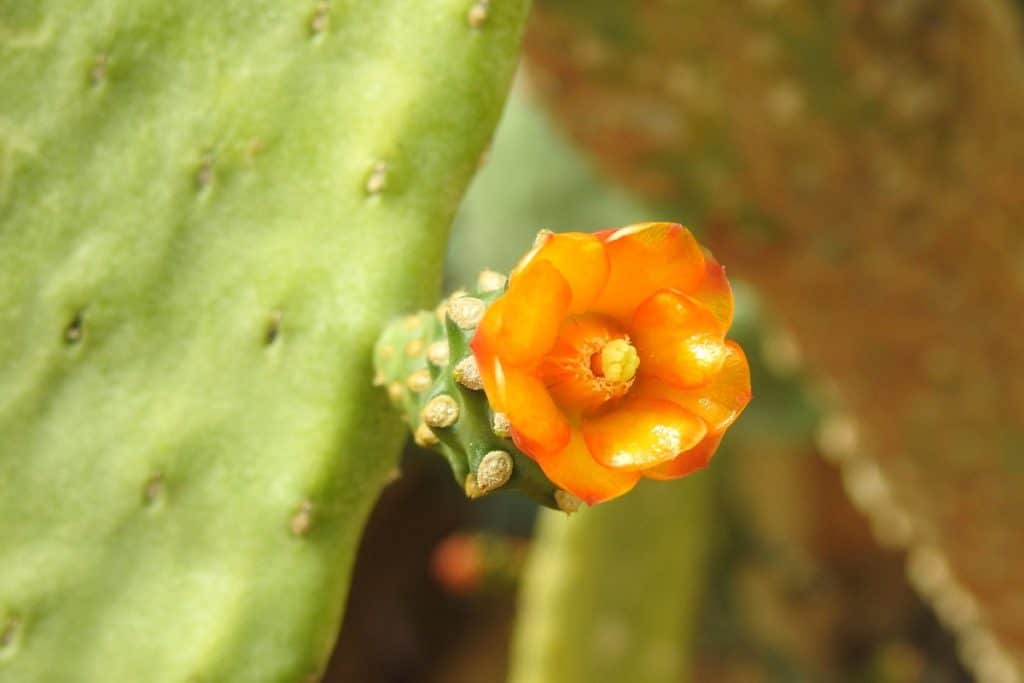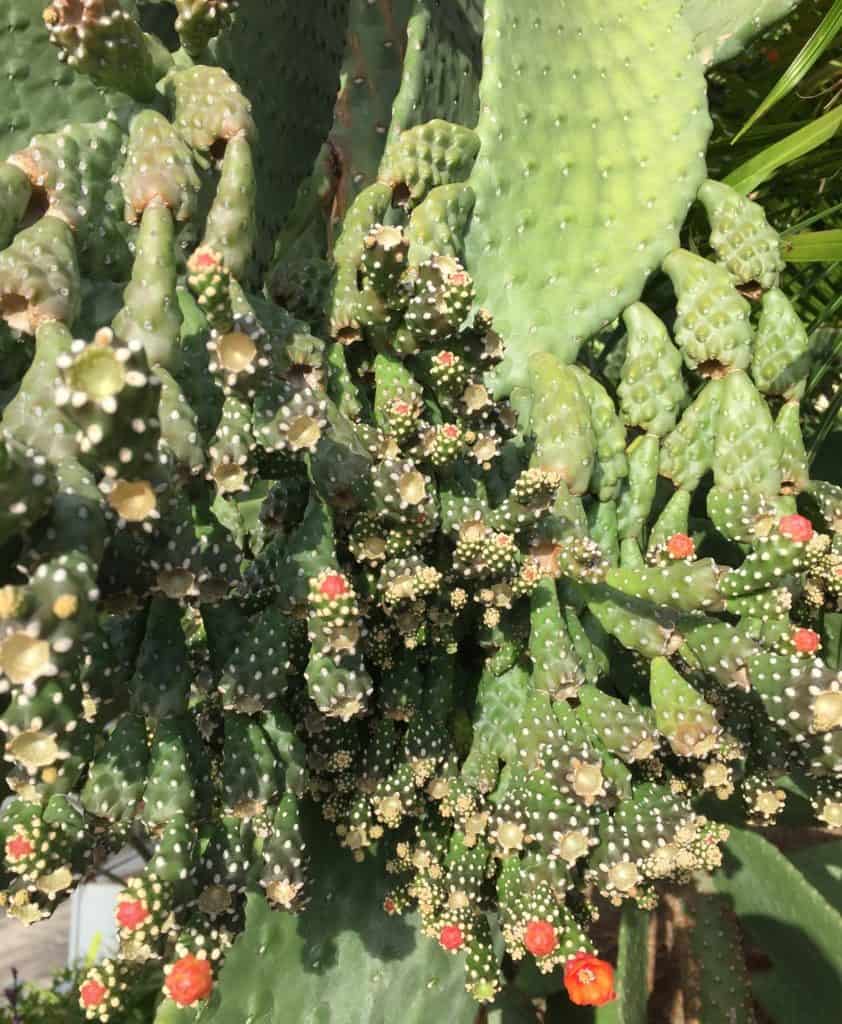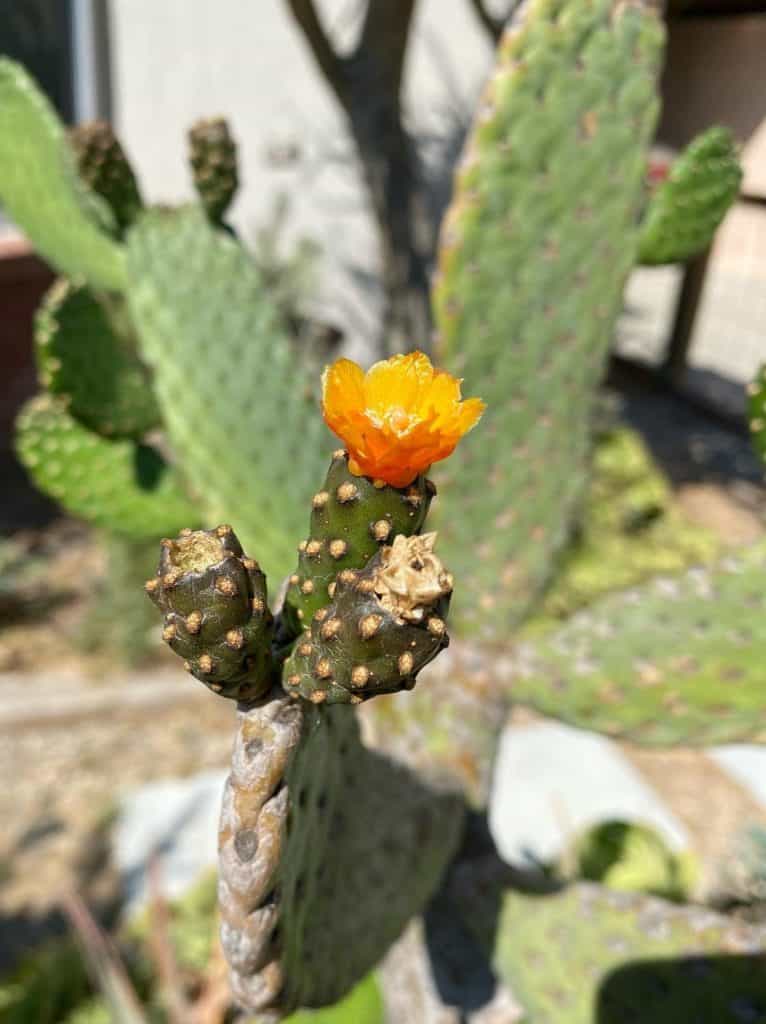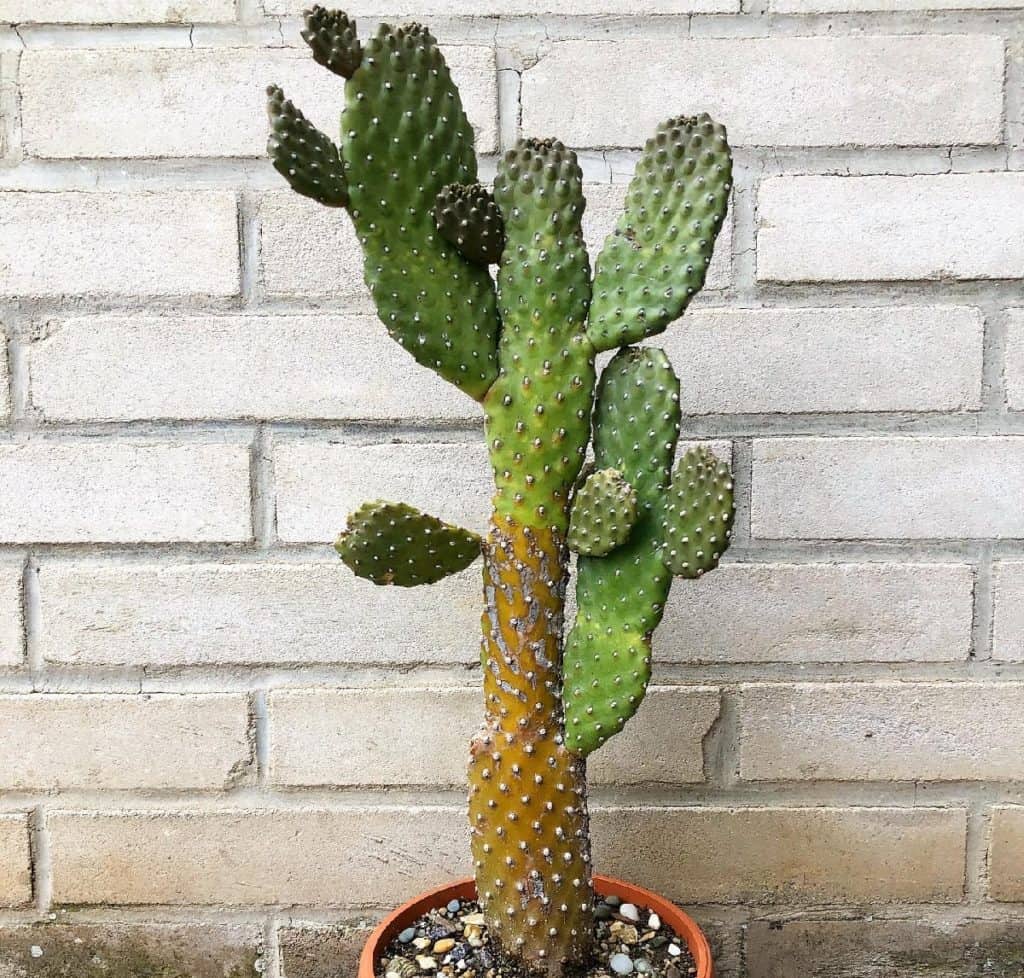Opuntia consolea: The Cactus Sensation You Need in Your Garden Now!
Are you looking to add a unique, low-maintenance beauty to your garden? Look no further than the Opuntia consolea, a captivating cactus that will leave you and your guests in awe! With its striking cylindrical dark green stem and thick, leaf-like offshoots, this cactus is a true showstopper.
But the Opuntia consolea isn’t just a pretty face – it’s a hardy, drought-tolerant plant that thrives in arid conditions, making it the perfect addition to any low-maintenance garden. And let’s not forget those vibrant orange flowers that bloom in the spring, adding a pop of color to your outdoor space.
In this guide, we’ll dive into everything you need to know about caring for and propagating this incredible cactus, so you can enjoy its beauty for years to come.

Related Post:
195 Opuntia Varieties [With Pictures]
Contents
How to Care for Opuntia consolea
If you’re planning to incorporate Opuntia consolea into your garden, here’s everything you need to know about caring for it.
Light Requirements
Opuntia consolea thrives in direct, full sunlight, so it’s essential to provide it with ample sun exposure. If you live in a region with hot, intense summers, it’s a good idea to provide some afternoon shade to prevent sun damage.
If you’re growing your Opuntia consolea indoors, you’ll need to invest in a high-quality grow light to mimic the natural sunlight it craves.

Watering Needs
As a desert-dwelling plant, the Opuntia consolea is incredibly drought-tolerant and doesn’t require frequent watering. In fact, overwatering is one of the biggest threats to this cactus, as it can lead to root rot.
During the spring, summer, and fall, water your Opuntia consolea once or twice a week, allowing the soil to dry out slightly between waterings. In the winter months, reduce watering to once a week or even less, as the plant enters a dormant phase.
Soil
The Opuntia consolea thrives in well-draining, gritty soil that mimics its natural desert environment. Here’s the ideal soil mix for this cactus:
- 20% coco coir or peat moss
- 60% vermiculite (for air permeability and drainage)
- 20% sandy soil
You can also add a small amount of organic potting soil to provide additional nutrients. The soil should have a pH between 6 and 7, which is slightly acidic.
Vermiculite is crucial for ensuring air permeability, as the Opuntia consolea’s roots are highly susceptible to root rot when oxygen is lacking. The soil should drain quickly, preventing water from pooling on the surface.
For added fertility, consider incorporating vermicompost or eggshell powder into the soil mix.

Fertilizer
During the growing season (spring, summer, and fall), feed your Opuntia consolea with a liquid fertilizer once a month. Look for fertilizers that are high in phosphorus and potassium, as these nutrients promote blooming and overall plant health.
In the winter months, when the plant is dormant, refrain from fertilizing.
If you’re repotting your Opuntia consolea in spring or fall, you can incorporate a small amount of slow-release fertilizer into the fresh soil mix. This will provide a steady supply of nutrients throughout the winter.
Avoid over-fertilizing, as this can lead to nutrient burn and stunted growth. If you notice yellowing or slow growth at the base of the plant, reduce or stop fertilizing immediately.
Climate
Opuntia consolea is a true desert dweller, thriving in hot, arid conditions with minimal rainfall. Here are the ideal climate requirements for this cactus:
- Temperatures between 68°F and 95°F (20°C and 35°C)
- Low humidity
- Well-ventilated surroundings
- Minimal rainfall
Growth and blooming will slow or stop if temperatures drop below 50°F (10°C) or rise above 95°F (35°C).
Pests and Diseases
While generally hardy, the Opuntia consolea can fall victim to a few common pests and diseases, including:
- Anthracnose: Small black dots in a spiral pattern, caused by high humidity and temperatures.
- Stem rot: Caused by insects, cold-induced wounds, or infected soil.
- Root-knot nematodes: Insect pests that darken the stem and offshoots, eventually leading to death.
- Spider mites: Tiny pests that create web-like structures and cause discoloration.
- Aphids: Small insects that cause yellowing and distorted growth.
- Other issues: Mealybugs, soft rot, viruses, rodents, and dry rot.

Pruning
Opuntia consolea requires minimal pruning, making it a low-maintenance plant. Simply remove any dead or withered branches, flowers, or offshoots to prevent the spread of disease or pests.
Potting and Repotting
When potting or repotting your Opuntia consolea, choose a clay pot with ample drainage holes. Avoid pots that are too small, as this can restrict root growth, or too large, which can lead to water accumulation.
Repot your Opuntia consolea once a year, typically in the spring or fall when temperatures are between 59°F and 68°F (15°C and 20°C). Gently remove the plant from its current pot, shake off any old soil, and replant in a fresh soil mix.
For seedlings, maintain high humidity by covering the soil with plastic film until germination occurs.
How to Propagate Opuntia consolea
Propagating Opuntia consolea is a breeze, and it’s a great way to share this stunning cactus with friends and family or to create a collection of your own. Whether you prefer division, grafting, or seeding, we’ve got you covered.
Division
- Using a clean, sharp knife or pruning shears, carefully cut off a lateral branch or the tip of the stem.
- Allow the cutting to callus over for a few days by placing it in a dry, shaded area.
- Once a callus has formed, plant the cutting in a well-draining soil mix.
- Water sparingly and provide ample sunlight. In a few months, you should see new growth emerging from the cutting.
Grafting
- Obtain a suitable rootstock, such as a barrel cactus or dragon fruit cactus.
- Cut off the tip of the rootstock, creating a flat surface.
- Carefully remove the Opuntia consolea cutting, ensuring that the roots are trimmed off cleanly.
- Place the Opuntia consolea cutting in the center of the rootstock’s flat surface.
- Secure the Opuntia consolea cutting to the rootstock using grafting clips or rubber bands, ensuring a tight fit.
- Place the grafted plant in a shaded area with good air circulation.
- Avoid watering the plant for the first week or two to allow the graft union to callus over.
- After a couple of weeks, you should see the graft union starting to grow together.
- Once the graft union has established, you can remove the grafting clips or rubber bands.
- Gradually introduce the grafted plant to more sunlight and resume regular watering and care.
Seeding
- Obtain fresh Opuntia consolea seeds from a reputable source.
- Fill a well-draining seed tray or pot with a sterile seed-starting mix.
- Sow the seeds on the surface of the soil, spacing them about 1 inch (2.5 cm) apart.
- Cover the seeds with a thin layer of the seed-starting mix, about 1/4 inch (0.6 cm) deep.
- Mist the soil with water until it’s evenly moist but not saturated.
- Cover the tray or pot with plastic wrap or a humidity dome to maintain high humidity levels.
- Place the tray or pot in a warm, bright location, ideally with temperatures between 70°F and 80°F (21°C and 27°C).
- Check the soil regularly and mist it with water when the surface begins to dry out.
- Once the seeds have germinated and developed their first pair of true leaves, remove the plastic covering.
- Transplant the seedlings into individual pots filled with a well-draining cactus soil mix when they’re large enough to handle.
